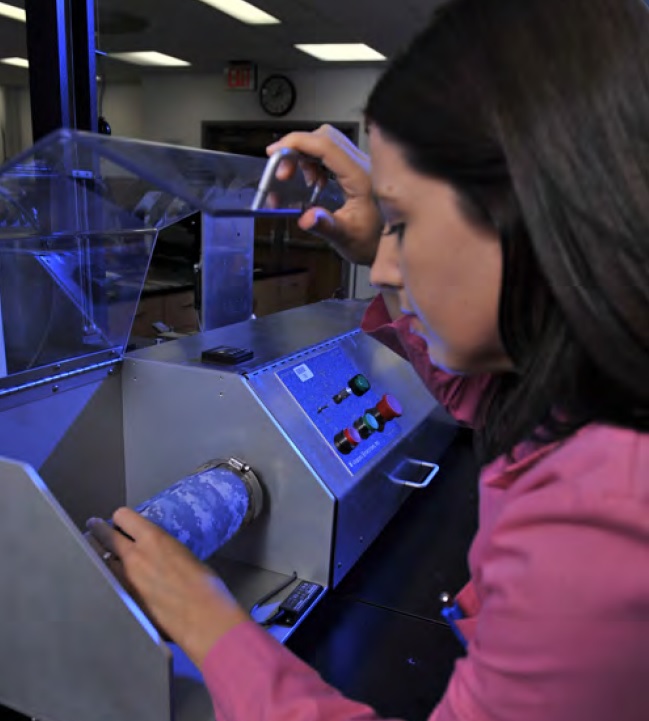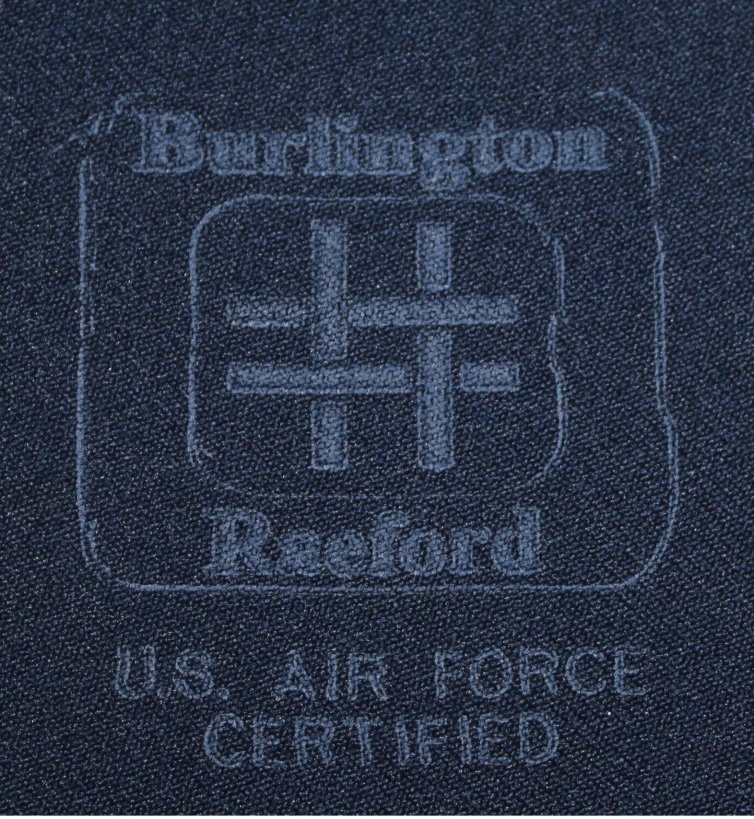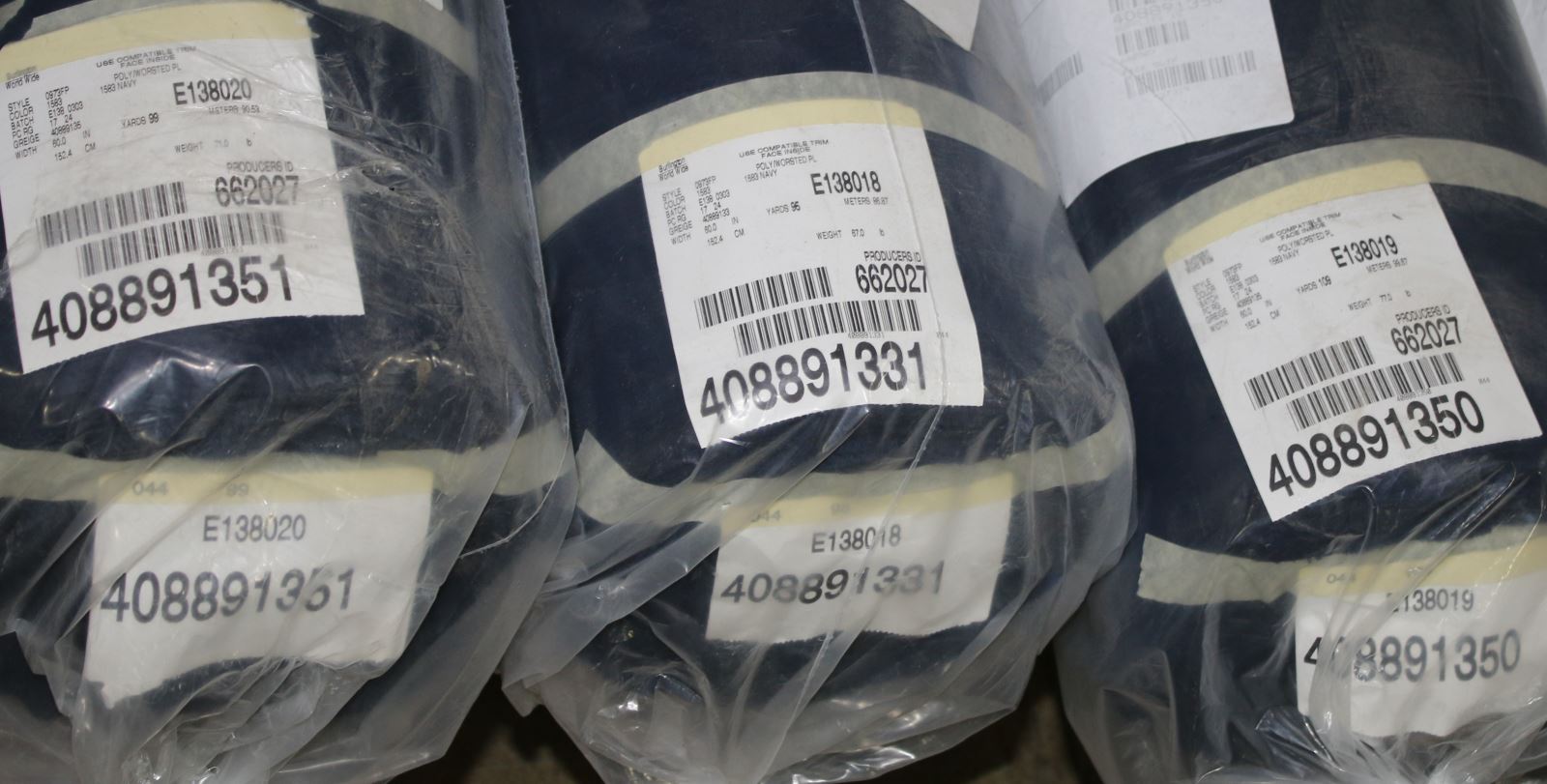Mil-Spec Materials: Cut from the Same Cloth
Dress uniforms are a source of pride for members of every branch of the United States Armed Forces, from junior-enlisted personnel and non-commissioned officers to the upper echelons of military brass. Iconic ensembles such as Army Greens, the Navy’s “Cracker Jack” Jumpers, and the Marine Corps’ Dress Blues have been so effective at making the wearer’s branch of service instantly recognizable that they’re often the focal point of recruiting imagery. Ask yourself: Is it even possible to say the phrase “The Few, the Proud, the Marines” without seeing those Dress Blues in your mind’s eye?
Military dress uniforms also have two more qualities: They aren’t inexpensive, and they aren’t optional. Because of these two factors, as well as the fact that armed-services members may purchase uniforms from both government-run exchanges and commercial vendors like The Salute Uniforms, the various branches of the military crafted highly detailed regulations prescribing the design of each their uniforms and the materials used to manufacture them.
The bottom line is that when members of the military purchase a uniform produced by a manufacturer that follows these guidelines—commonly called “Military Specifications,” or “Mil-Spec” for short—they know they’re getting a product that meets those minimum standards.
 |
| Color Spectrophotometer at the U.S. Natick Soldier Research, Development, and Engineering Center in Natick, Massachusetts. Fabrics must meet stringent standarrds not only for shade, but also for the type and quliaty of their cmposite materials. |
Mil-Spec Minutiae
It’s a straightforward concept, but some of the
minutiae of Mil-Spec can be a bit complex. Unfortunately, some commercial vendors use innuendo, disingenuous statements, and omissions of fact to exploit misunderstandings about Mil-Spec materials and production. A good example of this is the type of buttons used on Army Service / Dress uniforms.
Before the Army announced the replacement of the Green Class “A” Service uniform, a new finishing technique was invented that drastically improved the brilliance and shine of the 22k gold-plated buttons called for by the minimum button standards of U.S. Army Mil-Spec. At that point, there were two button types that met Mil-Spec and could be used on the Green Service Uniform, and vendors began to offer uniforms with the new “Hamilton-finish” buttons as a premium option. In fact, the buttons were such an improvement that when the Army introduced the new blue Army Service Uniform, they actually
became Mil-Spec rather than an optional upgrade.
But a major vendor of Army Service Uniforms has used this change to imply that its competitors are not only still issuing the old, non Mil-Spec buttons on ASU uniforms being manufactured today, but are also charging a premium for the Hamilton-finish buttons. This simply isn’t true: If you buy the current Army Service Uniform from a Mil-Spec manufacturer such as The Salute Uniforms, it ships with the Hamilton-finish buttons, period. Why?
Because it’s Mil-Spec!
To get a better understanding of how Mil-Spec works, let’s take a look the fabric that uniform manufacturers must use to comply with the regulations.
Mil-Spec Starts at the Mill
At The Salute Uniforms, we’re understandably proud of our employees’ workmanship and the design improvements we’ve incorporated into many of our military uniforms. Still, there’s one thing we can’t boast about: the quality of the fabric we use to craft our uniforms.
And we’re not alone. The truth is that
no Mil-Spec uniform manufacturer can make any unique claims about the quality of the cloth they use to produce their jackets, pants, shirts, and other clothing items, except to note the differences between the different fabric types allowed by Mil-Spec. That’s because uniform manufacturers don’t make the fabric they use to craft uniforms. Instead, it comes from mills that have submitted fabric samples to the appropriate certifying authority of each of the United States Armed Forces, such as the U.S. Army Natick Soldier Systems Center in Massachusetts
 |
| A kaumagraph imprinted on a roll of fabric stored in the The Salute Industries' warehouse in Archdale, North Carolina. |
Over a decade ago, there were several mills in the U.S. supplying uniform manufacturers with certified fabric; today, there are just a couple. And manufacturers can't go scouring the globe for material because the law specifies that uniforms worn by U.S. military personnel must be manufactured in the U.S. from U.S. cloth.
How rigorous is the certification process? Rather than certifying the mill itself as Mil-Spec and assuming its output will always meet those standards, these certifying authorities inspect every single roll of fabric a mill produces that’s intended for use in the manufacturing of a military uniform.
After the mill has produced a roll of fabric to be sold to a military uniform manufacturer, it cuts a swatch from it and sends it to the appropriate branch’s certifying authority. If the sample meets Mil-Spec standards, it’s returned to the manufacturer with a tracking number for the roll that the swatch came from. The manufacturer then puts an imprint called a
kaumagraph on the roll indicating it’s been certified, bags the certified roll, attaches the tracking information for that particular roll, and ships it to a manufacturer.
 |
| Every roll of fabric certified to meet Mil-Spec standards is given a unique tracking number associated with the sample that was sent to the appropriate certifying authority. (Image taken at The Salute Industries' warehouse.) |
The certifying authorities pay particularly close attention to the shade of the fabric samples. A miniscule variation would most very likely go unnoticed if you simply examined a single item—trousers or a jacket—manufactured with mis-shaded fabric. Pair that same item with its correctly colored clothing counterpart, on the other hand, and the difference would be glaringly obvious. One fabric manufacture recounts using a dye that had been manufactured by blending white and another color (most all do). When the dye valves were shut off at the end of the production run, one or two drops of white dripped into the huge batch—and that almost infinitesimal amount of additional white altered the dye’s shade so much it was unusable.
A Foundation for Excellence
Having said all that, the system isn’t 100-percent foolproof: That would be possible only if the certifying authorities inspected every square inch of every roll a mill manufactures. But it’s as close as you can get in a real-world system with practical applications as the end goal. The main point to remember is that this process ensures that
all manufacturers of Mil-Spec uniforms are using fabric that’s been certified to meet extremely high standards for quality and color.
At The Salute Uniforms, every item conforms to Mil-Spec, starting with the certified fabric we purchase to the patterns we use when cutting and sewing uniforms—except in those instances where we’ve incorporated permissible production and design enhancements to provide greater comfort, durability, or ease of care. We encourage you to browse our catalog and discover why are products are unsurpassed when it comes to quality and value.